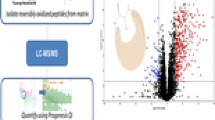Abstract
This study describes a new methodology by which the concentrations of non-protein (NP) thiols glutathione (GSH), cysteine (CSH), N-acetylcysteine (AcCSH), and protein (P) thiols (PSH), as well as the contribution of these components to symmetric and mixed disulfides (NPSSR, NPSSC, NPSSCAc, PSSR, PSSC, PSSCAc, PSSP) can reliably be measured. The methodology consists of a strict sequence of methods which are applied to every sample. Free thiols at any given state of the procedure are measured by Ellman’s assay, the CSH fraction is measured by its unique response in the ninhydrin assay, AcCSH is selectively measured with ninhydrin after enzymatic deacylation, proteins are separated from non-protein thiols/disulfides by precipitation with trichloroacetic or perchloric acid, disulfides are reduced into free thiols with borohydride, mixed disulfides between a protein and a non-protein component are measured by extracting the non-protein thiol from the protein pellet after borohydride treatment, and protein thiols/disulfides are measured after resolubilization of the protein pellet.
When this method was applied to animal and fungal tissue, new molecular indicators of the thiol redox state of living cells were identified. The findings of the present study clearly show that the new parameters are very sensitive indicators of redox state, while at the same time the traditional parameters GSH and GSSG often remain constant even upon dramatic changes in the overall redox state of biological tissue. Therefore, unbiased assessment of the redox state also requires explicit measurement of its most sensitive thiol indicators.



Similar content being viewed by others
References
Sies H (1999) Free Rad Biol Med 27:916–921
Halliwell B, Gutteridge CMJ (1999) Free radicals in biology and medicine. Oxford University Press, Oxford
Giles IG, Tasker MK, Jacob C (2001) Free Rad Biol Med 31:1279–1283
Akerboom MPT, Sies H (1981) In: Colowick SP, Kaplan ON (eds) Methods in enzymology, vol 77. Academic Press, New York, pp 373–382
Li J, Huang LF, Huang PK (2001) J Biol Chem 276:3098–3105
Harrap RK, Jackson CR, Riches GP, Smith AC, Hill TB (1973) Biochim Biophys Acta 310:104–110
Gilbert FH (1995) In: Packer L (ed) Methods in enzymology, vol 251. Academic Press, New York, pp 8–28
Ratbbun BW (1990) In: Vina J (ed) Glutathione: metabolism and physiological functions. CRC Press, Boca Raton, pp 193–206
Miquel J, Weber H (1990) In: Vina J (ed) Glutathione: metabolism and physiological functions. CRC Press, Boca Raton, pp 187–192
Levitt J (1972) Responses of plants to environmental stresses. Academic Press, New York
van der Vliet A, Cross EC, Halliwell B, O’Neill AC (1995) In: Packer L (ed) Methods in enzymology, vol 251. Academic Press, New York, pp 448–455
Cotgreave AI, Weis M, Atzori L, Moldéus P (1990) In: Vina J (ed) Glutathione: metabolism and physiological functions. CRC Press, Boca Raton, pp 155–175
Brigelius-Flohé R (1999) Free Rad Biol Med 27:951–965
Ewing FJ, Janero RD (1998) Free Rad Biol Med 25:621–628
Täger M, Piecyk A, Köhnlein T, Thiel U, Ansorge S, Welte T (2000) Free Rad Biol Med 29:1160–1165
David LL, Shearer RT (1984) Toxicol Appl Pharmacol 74:109–115
Tietze F (1969) Anal Biochem 27:502–522
Ellman LG (1959) Arch Biochem Biophys 82:70–77
Redegeld FAM, Koster AS, van Bennekom WP (1990) In: Vina J (ed) Glutathione: metabolism and physiological functions. CRC Press, Boca Raton, pp 11–20
Hissin JP, Hilf R (1976) Anal Biochem 74:214–226
Ball RC (1966) Biochem Pharmacol 15:809–816
Riener CK, Kada G, Gruber HJ (2002) Anal Bioanal Chem 373:266–276
Ogwu V, Cohen G (1998) Free Rad Biol Med 25:362–364
Puka-Sundvall M, Eriksson P, Nilsson M, Sandberg M, Lehmann A (1995) Brain Res 705:65–70
McLellan LI, Lewis AD, Hall DJ, Ansell JD, Wolf CR (1995) Carcinogenesis 16:2099–2106
Georgiou DC, Zervoudakis G, Tairis N, Kornaros M (2001) Fungal Gen Biol 34:11–20
Wong KB, Corcoran BG (1990) In: Vina J (ed) Glutathione: metabolism and physiological functions. CRC Press, Boca Raton, pp 255–262
Habeeb ASFA (1973) Anal Biochem 56:60–65
Means EG, Feeney ER (1971) Chemical modification of proteins. Holden-Day, San Francisco
Gaitonde KM (1967) Biochem J 104:627–633
Margenau H, Murphy MG (1976) The mathematics of physics and chemistry. Krieger, New York
Tang S-S, Lin C-C, Chang G-G (1996) Free Rad Biol Med 21:955–964
Brigelius R, Muckel C, Akerboom MPT, Sies H (1983) Biochem Pharmacol 32:2529–2534
Buege JA, Aust SD (1978) In: Fleisher S, Packer L (eds) Methods in enzymology, vol 52. Academic Press, New York, pp 302–310
Nickander KK, McPhee RB, Low AP, Tritschler H (1996) Free Rad Biol Med 21:631–639
Sedmak JJ, Grossberg ES (1977) Anal Biochem 79:544–552
Acknowledgments
This work was financially supported by the Greek Ministry of Education and by ‘K. Karatheodoris Program’, University of Patras, Greece. Dr D. Synetos and Dr Nikolaos Matsokis (from Biochemistry Department of School of Medicine and from Biology Department, respectively, of the University of Patras, Greece), contributed significantly to this work by providing yeast and mice, respectively.
Author information
Authors and Affiliations
Corresponding author
Electronic Supplementary Material
Rights and permissions
About this article
Cite this article
Patsoukis, N., Georgiou, C.D. Determination of the thiol redox state of organisms: new oxidative stress indicators. Anal Bioanal Chem 378, 1783–1792 (2004). https://doi.org/10.1007/s00216-004-2525-1
Received:
Revised:
Accepted:
Published:
Issue Date:
DOI: https://doi.org/10.1007/s00216-004-2525-1




